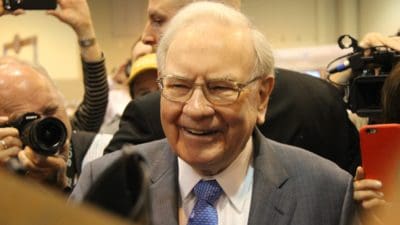Until last week, 2018 had looked like being a good year for GlaxoSmithKline (LSE: GSK) shareholders. After years of indifferent performance, the market seemed to be gaining confidence in CEO Emma Walmsley’s growth plans.
That changed last Monday when Ms Walmsley announced two multibillion pound deals. The shares have since fallen by more than 10%.
The first piece of news was an agreement to sell the Horlicks business to Unilever for £3.1bn. This deal had been on the cards for a while and was good news, in my view. It should have increased Glaxo’s focus on pharmaceuticals and raised cash for debt repayments.
A surprise twist
However, the Horlicks announcement was followed less than four hours later by news that the firm had agreed to spend $5.1bn (£4bn) buying US pharma firm Tesaro.
Tesaro specialises in developing oncology (cancer) treatments. It’s described as “a commercial-stage biopharmaceutical company”, but it only has one commercial product, Zejula, which is approved for use in ovarian cancer.
Sales have risen from $4m in 2015 to $220m last year, but losses have risen from $92m in 2013 to $496m in 2017. Prior to news of the Glaxo deal, analysts were forecasting even bigger losses in both 2018 and 2019.
Given this, you might wonder why Ms Walmsley is prepared to pay so much. After all, a price tag of 23 times sales for a loss-making company is certainly not cheap.
Long-term opportunity
Glaxo’s boffins believe that Zejula and the “PARP inhibitor” science it’s based on could “offer significant opportunities for use in the treatment of multiple cancer types”.
If this treatment can be applied to a much broader range of conditions, then sales and profits could multiply many times over. However, even in the most optimistic scenario, Tesaro isn’t expected to increase GSK’s earnings until 2022.
Between 2018 and 2020, “the acquisition of Tesaro and associated R&D and commercial investments” are expected to reduce Glaxo’s adjusted earnings by “mid-to-high single-digit percentages”.
As a result, the firm has downgraded its guidance for the 2016-20 period. Management now expects adjusted earnings growth to be at the bottom end of the previously advised range. It’s not quite a profit warning, but in my opinion, it’s close.
The money question
Ms Walmsley obviously sees Tesaro as a long-term investment that could pay off big. In effect, she’s buying in R&D to speed up the development of new products.
The only problem is that her firm isn’t exactly flush with cash. At the end of September, net debt was £23.8bn. Assuming no other changes to borrowing, I estimate that the combined impact of the Horlicks and Tesaro deals will increase this figure to £24.7bn.
My view
I’m a little uncomfortable with this situation. My estimates suggest that Glaxo’s net debt will be around 4.4x adjusted net profits at the end of 2018. That’s quite high, in my opinion.
Although Glaxo should be big enough to manage this level of debt, I share my colleague Rupert Hargreaves’ view that the 80p per share dividend is becoming hard to afford.
The cash cost of this dividend is about £4bn per year. That’s 70% of forecast profits for 2018. This leaves little room for debt repayments.
On balance, I’d rate Glaxo as a hold after last week’s news. I don’t see any rush to buy.







